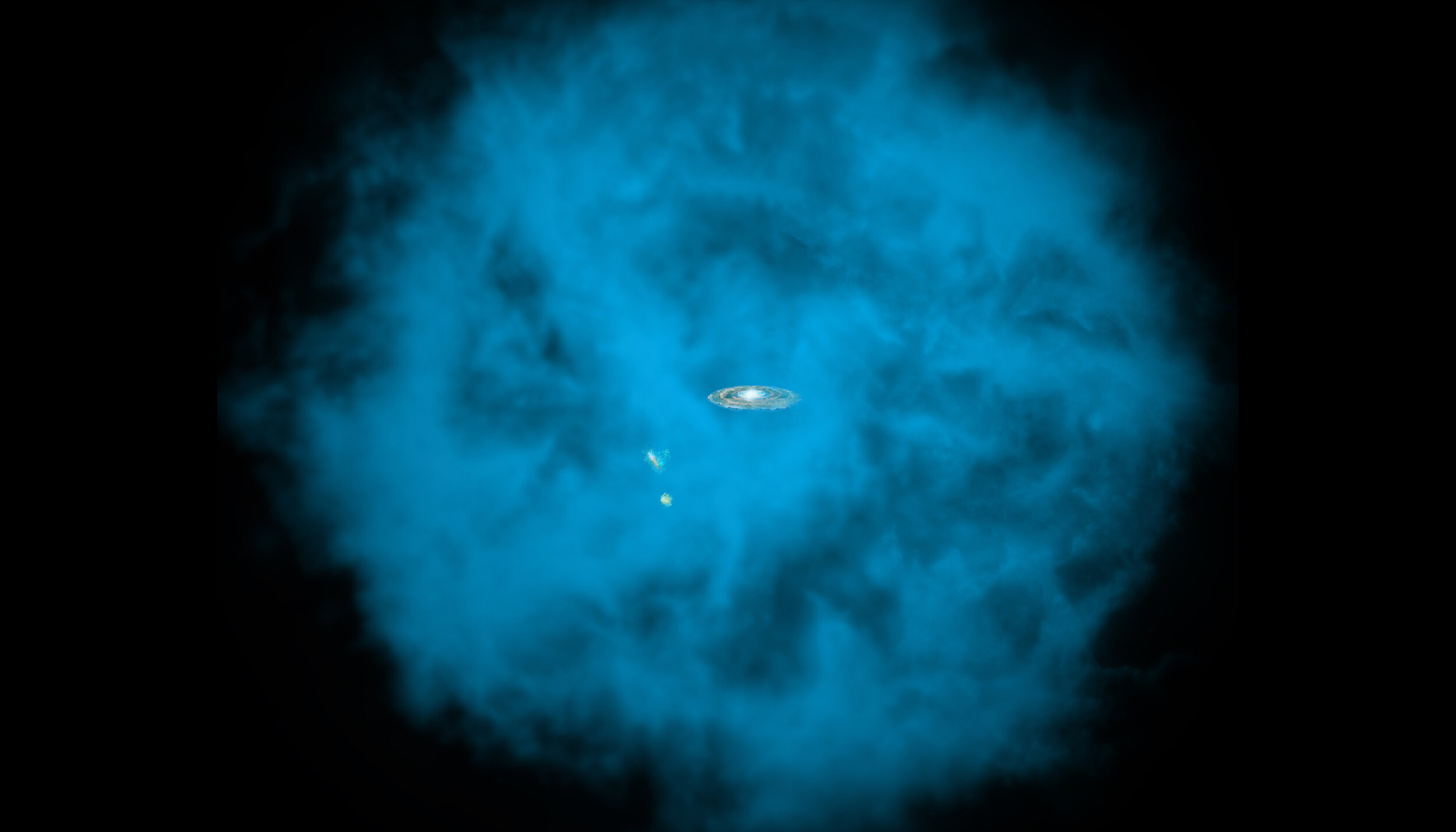Follow us on Google News (click on ☆)
This quest may finally reach its conclusion thanks to a major discovery involving halos of ionized hydrogen gas around galaxies.
An international team used an innovative method to detect this invisible gas. By superimposing images of over one million galaxies, they were able to observe subtle variations in the cosmic microwave background. These variations reveal the presence of a gas halo much more extensive than previously thought around galaxies.

Artist's representation of the hot hydrogen gas halo surrounding the Milky Way and two satellite galaxies, the Magellanic Clouds. This halo contains enough gas to solve the mystery of the missing matter.
Credit: NASA/CXC/M.Weiss; NASA/CXC/Ohio State/A Gupta et al
The researchers exploited the kinematic Sunyaev-Zel'dovich effect, a technique for measuring electron scattering in ionized gas. This approach allowed them to map the distribution of gas around galaxies with unprecedented precision. The results suggest that supermassive black holes at the centers of galaxies play a key role in dispersing this gas.
Current galaxy formation simulations may require major adjustments. New models will need to incorporate this more intense black hole activity, which ejects gas far beyond previously estimated limits. This discovery also opens new perspectives for studying the large-scale structure of the Universe.
The team collaborated with researchers worldwide, using data from the Dark Energy Spectroscopic Instrument (DESI) and the Atacama Cosmology Telescope (ACT). These instruments provided precise measurements of the cosmic microwave background and the galaxies studied. The results are undergoing peer review for publication in Physical Review Letters.
This discovery resolves a major conflict between astronomical observations and cosmological models. It shows that the missing matter was right before our eyes, but in a form too diffuse to be detected with traditional methods. The implications for cosmology are vast, particularly for understanding the distribution of matter in the Universe.
Next steps include further analyses with simulations to refine these results. Researchers also hope to use this technique to probe the early Universe. This could provide valuable clues about the laws of physics in the Universe's first moments.
What is the kinematic Sunyaev-Zel'dovich effect?
The kinematic Sunyaev-Zel'dovich effect is a phenomenon where photons from the cosmic microwave background are scattered by electrons in ionized gas. This scattering causes slight temperature variations in the cosmic background, revealing the presence and distribution of the gas.
This effect allows astronomers to detect gas structures that are too cold and diffuse to be observed directly. It is particularly useful for studying the hot intergalactic medium, a major but difficult-to-observe component of the Universe.
Measuring this effect requires extremely sensitive instruments, such as the Atacama Cosmology Telescope. The collected data can then be analyzed to map the distribution of gas around and between galaxies.
Why do supermassive black holes eject gas?
Supermassive black holes at galaxy centers can become very active, swallowing large amounts of matter. This activity generates particle jets and powerful winds that eject surrounding gas far from the galactic center.
This process, called galactic feedback, plays a crucial role in regulating star formation. By ejecting gas, black holes limit the amount of matter available to form new stars, thus influencing galaxy evolution.
The new observations suggest this feedback is more vigorous and extensive than expected. Black holes may be active at different stages of their lives, not just during their initial growth phase.